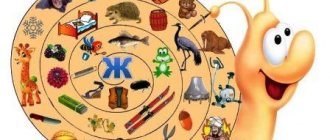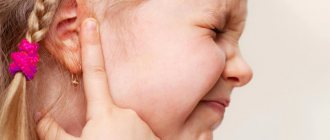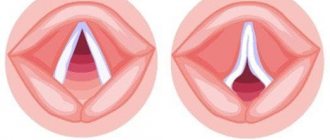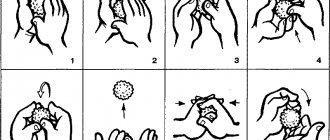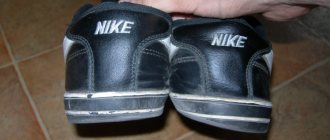One of the most necessary skills that a baby must acquire in its first 2 years of life is to learn how to speak correctly and convey thoughts in words. It depends on this whether he will be able to find a common language with others.
You don't know how to make or teach your child to speak without much difficulty? Then you should read this article.
The ability to speak is one of the most important human skills
How to teach a child to talk?
The baby is already walking, but has not yet learned to talk.
This question worries parents very much. But it is important to remember that each child is an individual and if there is no developmental delay, then you just need to be patient. A small child can be compared to a voice recorder and copyright. He writes everything down and copies it after his parents. The baby is like a blank slate. He listens to mom and dad, remembers the sounds and syllables they make, and tries to repeat it himself, placing his tongue in different positions.
And it turns out that it works. First he works on the sound, then he tries to combine it into a word. This takes time and training.
And how can mom and dad help in this situation? In order for the baby to speak faster, you need to have a conversation with him. She should be relaxed. While doing ordinary things, walking in the fresh air, playing with the baby, parents should have a dialogue with the baby.
Speech therapists distinguish two types of speech development: passive and active. Passive is understanding the language, and active is speaking. Passive develops much faster in a baby.
Starting from 10-12 months of age, the baby understands what we are talking about. Knows the name of objects, but still can’t say it. Repeats individual syllables, say aw-aw, ko-ko, yes, ma, pa.
Children are all different, but most of them do not speak until they are two years old. This is normal, the main thing is not to panic. They understand everything and will definitely talk.
Then the baby will tell you everything he has accumulated over these two years. This moment will come unexpectedly. And already at three years old, the child’s development will be at the level of his peers or even surpass them.
It is important to remember the moment of awareness. That is, when a child simply repeats words after his parents, and when he consciously names them. Therefore, the child also needs to be shown what we are talking about.
For example, when playing with a child with toys, telling him what kind of toy it is, showing him how to play with it, you can come up with a story and make a kind of puppet theater. The main thing is to talk to the child and perceive him as an adult.
Child speech development from birth to 3 years
A child’s speech development consists of several stages, knowledge of which will help you avoid problems and contact a specialist in time. Children do not develop at the same rate, but if the delay in speech exceeds one age period, consultation with a speech therapist is necessary. But before you think about how to teach a child to speak early, it is worth familiarizing yourself with the features of children’s speech development in the first 3 years of life.
First year
Already in the first months, a newborn is able to master a number of sounds and sound groups. The baby makes sounds in response to adults' calls. The same cry of a child is a combination of the vowels a, u, o, i. At the same time, the sounds that a child makes differ from adult speech; they seem to go into the nose.
At about 1.5 months, the period of so-called humming begins. The baby begins to pronounce individual consonant sounds k, g, x, combining them with vowels. The result is gu, agu, etc. It is very good if humming occurs when communicating with adults, because this indicates the replacement of reflexive sounds with communicative ones. In addition, when humming, the intonation system of the language develops.
Babbling begins at 6 months. This stage is characterized by the pronunciation of syllables: ba, pa, ma... This stage lasts up to 11 months. At first the syllables are quite simple, but over time they turn into long chains that are prototypes of words. Also, by the first year, the child can learn to pronounce a few simple words and understand some short sentences. Are special techniques needed for this? How to teach a child to speak without a speech therapist? You will learn about this below.
Second year
At the beginning of the year, it is noticeable that the child understands adult speech more and more. In addition, the baby more often repeats words after others and listens carefully if spoken to. He can also respond in his own language. The first phrases may also appear. But obvious signs of speech development should not be expected before 2 years. Note that during the described period, working on speech is no less interesting for the baby than physical activity.
Third year
It is at the age of 3 that noticeable progress in speech development appears. Whole sentences appear in conversation. The baby begins to ask questions “when?” and “why?”, use plural and singular, different parts of speech. How to teach a child to speak at 3 years old? At this time, it is useful for the child to listen to readings, sing songs and communicate a lot with adults. Further development of speech is assessed by the ability to answer questions, build logical chains, and take initiative in conversation.
Stages of speech development
There are five stages:
- Booming. At about two to three months, the baby tries to make sounds.
- Distinct humming. Starting from the fifth to seventh month, sounds become more or less intelligible.
- Pronunciation of short words. At seven to nine months, the baby speaks short words: mom, dad, grandma.
- Meaningful pronunciation of words. After the ninth month, the baby puts meaning into the syllables he pronounces.
- Lexicon. After a year, the child should pronounce up to 10 words. He remembers and learns quickly.
Speech development techniques
- Conversation between mother and child. The mother spends a lot of time with the baby. Tactile and verbal conversation is important to him. It is necessary to hum to the baby so that he can see mommy’s face and articulation.
- Comment on your actions. Tell your baby everything you do.
- Talk to your child so that he can see your face and your articulation.
- At the age of 1.5 - 2 years, the mother should conduct a conversation with the baby in the usual rhythm and tone. Only when it comes to new words, special attention is paid to articulation and stress.
- Don't replace complex words with simple ones. Call a spade a spade.
- Don't forget about verbs.
- Use contrast. For example: a bird flies - a dog runs
- Read poems, nursery rhymes, fairy tales from the very beginning.
- Play with words, syllables, sounds.
- It is important to improve the development of fine motor skills of the hands. Let your baby play with cereals, pasta, and dough. Children with well-developed fine motor skills are able to think logically, they are attentive, and they begin to talk and write faster.
How to teach a child to talk at 2-3 years old
At this age, children perceive long stories and orient themselves in abstract concepts. They know how to construct a multi-word phrase, talk with participles and prepositions, conjunctions and pronouns. At 3 years old, the vocabulary reaches 700 words, the baby can compose long phrases.
Parents should:
- Ask questions, asking about colors, number of items, their sizes. The question must be structured so that the child does not answer in monosyllables, but describes the subject in detail.
- Use long sentences in conversations, avoiding short phrases. Complex phrases will help the child master the structure of the language. After all, it is impossible to learn to say what you have not heard.
- Read to your child every day and explain what you read.
- Sing children's ditties together, which helps develop the speech apparatus, and poems for memory and vocabulary.
- Pay attention to the development of fine motor skills. This is important advice because the parts of the brain responsible for speech are located nearby. Their development is stimulated by modeling from plasticine, mosaics, and stringing beads.
The child does not speak at two years old. Causes. How can you teach to talk?
The baby is two years old, but he still doesn’t want to talk? Why does this happen? How can he be taught this? These questions concern young parents.
Experts who study the main reasons for the reticence of children will help you figure it out:
- Heredity. If the baby's parents were in no hurry to talk
- Laziness. The kid is lazy, but his parents indulge him in this
- Accumulation of information. The child accumulates for a long time, and then speaks in phrases.
There are also physiological abnormalities: trauma at birth, previous illnesses, lack of hearing.
You can teach your baby to speak, the main thing is not to despair and work with your child regularly. Create a favorable language environment in the house and encourage the child to speak language. First of all, we take pictures on any topic - fruits, vegetables, animals, cars, planets, etc.
Or books with lots of illustrations. We hang it on the walls, cabinets, refrigerator, at the level of children's eyes. At the same time, discuss with the baby what is shown in the picture.
First, explain to the baby by naming the image, bringing it as close to your face as possible. Young children read lips. It is important here that the baby reads what you told him.
Pictures need to be changed every week. The game should be fun and bring the child a good mood. If the child is not interested, nothing will come of it.
When does a child begin to say his first words?
Starting from 1 year, the baby begins to actively move around the house, thereby gaining new experiences. The experience gained is reflected in speech development.
Often, a baby speaks its first words between 9.5 months and 1 year 6 months. Most often, the first words are what he hears most often - dad, mom, grandma or uncle.
Features of speech learning for a baby from six months to 1 year
At 6 months, the baby knows his name and turns his head if it is pronounced. During play, experts recommend asking questions that would prompt the child to say the name of the toy he is playing with. Always respond to his babble and gradually teach him to pronounce short words that consist of several syllables.
The period from 8 to 9 months is the best time to teach your baby to imitate the sounds of different animals. Show everything by your example.
Very often, to develop the speech apparatus, they use a game in which you need to show a part of the body and name it.
Features of speech development in children from one to 2 years old
How quickly a child learns to speak directly depends on how often his parents talk to him. At the age of 1 year, children not only understand that they are being addressed, but also know how to speak short and simple words. As the baby begins to walk, his vocabulary will begin to increase.
For effective development, you can use the following games:
- Games that help develop intonation. For example, you can put a toy lion and a cat in front of a child, and give him the task that he meowed like a cat, and then roared like a lion. This exercise is good for developing vocal timbre, and it also teaches you to quickly change intonation.
- Ask your child to name and show what toys he has. This is an excellent exercise not only for the development of the speech apparatus, but also for memory.
- While looking at pictures in a book with your child, ask him to say what the person in the picture is doing and what else he sees.
How to teach a baby to speak in simple sentences?
Please note that coherent speech is formed only by the age of 3. In order for children to start speaking in sentences, parents themselves need to speak in simple sentences
Ask your child to describe what he is doing or what others are doing. Show him an example, let him repeat simple sentences after you first. Try to play games that involve the baby's direct speech.
Four basic tips to help your child develop speech
Articulation gymnastics classes will be useful. These exercises can be done even with babies.
Please note that such activities will be most useful until the baby learns to speak clearly. Listen carefully to what your child has to say. Give him feedback with a response phrase
Active listening is necessary in order to correct the baby during speech, thereby correcting it. During correction, use clarifying questions, ask again and ask to repeat the spoken word. Read aloud. Children who listen to their parents speak faster begin to speak themselves. Thus, the baby learns more words, thereby making his speech richer. Sing songs and learn simple poems. So, the child will be much more interested in learning.
Why may there be delays in the speech development of children?
Often the reason for late speech development is that children do not receive the necessary communication. Busy parents often surround their baby with various technologies: TV, tablets, and this negatively affects the baby’s development. What he needs is live communication. This is explained by the fact that the baby hears speech on TV, however, he does not understand that it is addressed to him.
Sometimes the reason that children do not begin to speak clearly for a long time is that parents understand the baby’s babble well. Instead of encouraging the baby to speak correctly, parents begin to guess what he wants to say. Excessive baby talk can have a negative impact on your baby's development.
Speech problems can also be caused by the fact that the child is disobedient or very active. Such a child becomes absent-minded and does not try to remember and reproduce new words. Instead of listening to what mom or dad wants to say, the baby begins to scream and interrupt communication.
As a result, it should be noted that each child develops differently. Some people start speaking very early, others with a slight delay
Despite this, parents should pay great attention to the development of correct and competent speech. However, remember that everything should happen in a playful way, the baby should like such activities
Speech therapy exercises for developing speaking skills
Professor Pavlov proved a direct dependence on the use of muscle sensations that go from the tongue organ to the cerebral cortex. In simple words, fine motor skills have a beneficial effect and stimulate speech development.
Preparatory exercises for developing both physically and quickly speaking:
- Fun with different types of cereals: pouring, sifting, searching for toys in cereals, drawing on semolina, etc.
- Modeling from plasticine or special dough
- Painting with finger paints and brushes
- Finger games: special finger puppets, musical songs - dramatizations by E. N. Zheleznova. “Bale-bale fist”, finger games in the form of rhymes “Lessons of a speech therapist” Kosinova E. M.
- Reading books. Let's start with some nursery rhymes. You can read Barto's "Toys". Next, go to the fairy tales: Kolobok, Turnip, Teremok, Soroka Belobok and others. The main task is active reading, conversation between mother and baby.
- Games with toys, during which you talk to the child and encourage him
- You can talk and describe daily home activities
- Watch cartoons, listen to music, sing funny songs for the baby
- It is useful for a child to play in the sandbox and communicate with peers.
Talk to your child constantly
Any interaction with the baby should be accompanied by a discussion of what is happening - whether you are going for a walk, starting a meal, changing your pants. Tell your baby about everything you do, name the objects you use. “And now we will change clothes! We'll wear green pants!" After repeated mention and demonstration of actions and objects, the child begins to understand what individual words and then short phrases mean.
Here's what to remember when communicating with your child:
- Avoid two extremes: stinginess with words and verbosity. If you keep telling your baby everything in a row, then the word that the child should remember will be lost behind the flow of words, and all your speech will merge for the baby into one incomprehensible whole.
- In a conversation, it is necessary to highlight the names of objects and actions. It is very useful to speak in short sentences (two words) or simply name objects and actions in monosyllables. “This is a spoon” “The bear is eating.” Before going into more detailed descriptions, give your child time so that he can comprehend your words, get acquainted with new objects, and hold them in his hands.
- Your speech should coincide with the moment of showing the object and action.
- Tell your child rhymes and nursery rhymes more often; they are emotional and rhythmic, so they immediately attract the child’s attention and are easier to digest than ordinary speech. After 6 months it is very useful to play the simplest gesture games.
- It is advisable that during a conversation the baby sees your face, because he not only listens, but also carefully watches the movement of your lips. Speak expressively, because... the child first of all picks up intonation
- When talking to your child, constantly ask him questions and try to wait for his reaction. “What a beautiful doll, do you like it?” The answer can be in any form - laughter, humming, grumbling. You should show interest in each answer: “Really?”, “That’s how interesting!” By acting in this way, you seem to invite the baby to enter into a dialogue with you, motivating him to say his line.
- Gesture, this will help the baby understand the meaning of your words. But don't overdo it! Do not use contrived gestures, but only those gestures with which you would naturally complement your statement. For example, you can raise your arms high to show how big your daughter has grown, or wave your hand invitingly, saying “Crawl here!”
Articulation gymnastics for little ones
It is very useful to give your baby a massage before gymnastics. The baby should be in a good mood and healthy. The recommended exercise time is the same and lasts no more than 15 minutes. Any mother knows her child and can create gymnastics in an interesting way.
- Balloon. We show the baby how to inflate a balloon, while inflating his cheeks. This way we massage the face.
- Locomotive. We teach the child to distinguish sounds. How does a train make? That's right. Fold the sponges into a duck shape, making circular turns left and right at the same time. Time, one minute per side.
- Smile. First we smile, and then we put our lips into a tube, two minutes.
- Kiss. We kiss and press our lips together. We practice for two minutes.
- Little horse. You need to make a similar sound when stopping a horse - tfpr-tfpr. We do it as continuously as possible. This exercise helps to develop your lips.
- Mouth - sponges. Use your tongue to sweep across your lips in both directions.
- Language. Consistently touch the upper and lower lips. Next to the corners of the left and right sides of the mouth.
- Morning wash. We imitate washing the face, stroke the face and neck with both hands, rub from the forehead, along the maxillary sinuses, to the neck.
- We finish the gymnastics by repeating vowels and consonants.
Speech therapists, for the formation of the articulatory apparatus, recommend reading the book “Fun Articulation Gymnastics” with your child, N.V. Nishcheva. The book is suitable for little ones too.
By repeating sounds after animals and imitating movements, looking at bright pictures, such gymnastics can be done easily and naturally. And the beautiful mirror included is a pleasant surprise for the kids, because they love to look in it.
Another very cool book for children from six months is “Lessons of a Speech Therapist” by E.N. Kosinova. The contents of the book are simply fascinating. It presents a whole collection of finger games, language gymnastics in the form of games (funny stories about the languages of the world), tongue twisters for children aged 3 years and older. The book is very bright.
How to teach a child to say the letter P: speech therapy exercises
For children, the sound “r” is the most difficult to pronounce. Most parents are concerned with the question of how to teach their baby to say the letter “R”.
As defectologists say, the favorable age for mastering the sound “r” is five to six years. It is at this age that the intervention of a specialist can help the child speak correctly.
Although the foundation needs to be laid from the very beginning. For this purpose, a set of exercises has been developed in a playful way for the little ones:
- Learn a few tongue twisters with your child that train the sound “r” or come up with your own together with your child
- Ask your baby to imitate the sounds of animals, such as a tiger.
- Many children love the “cat” exercise. Pour milk into a bowl and ask your baby to drink it, like a cat does.
When should you seek help from a speech therapist?
Home activities with your child help improve the pronunciation of letters and stimulate the development of conscious speech. But parents are not always able to help their child start talking normally. In this case, you need to contact a speech therapist.
It is necessary to make an appointment with a specialist when your child:
- silent with normal hearing and mental development;
- pronounces complex letters poorly;
- pronounces words unclearly;
- cannot construct coherent sentences.
Some parents think that a speech therapist should be contacted from the age of 5-6 years.
But, as practice shows, better and faster results can be achieved if you start classes with a specialist at an early age. In his practice, a speech therapist uses special massage and exercises that improve articulation and pronunciation of words.
How to teach a child to say the letter Sh
Another “problematic” sound among children is “Sh”. It is important to start learning as early as possible so as not to miss the moment and correct the pronunciation in time. We start with articulation gymnastics.
- "At the dentist." The child opens his mouth as wide as possible and fixes the position for 15 seconds. Repeat 10 times. The exercise strengthens the lower jaw.
- "Fence". We smile and place the upper jaw on top of the lower jaw. We fix it for 20 seconds, trying to relax the facial muscles.
- "Smile". Having closed our teeth, we try to stretch our lips into a smile for 5-10 seconds, repeat 10 times.
- "Proboscis". We stretch our lips into a tube as far as possible. Repeat 10-15 times
After warming up, we begin language learning:
- "Horse". We press our tongue to the roof of our mouth and clack, imitating a horse.
- “Clock”. Turning left - right, repeat “Tick-Tock”
- “Toad” We move the tongue forward and backward.
- Create your own word game with hissing sounds.
- Communicate with your baby without “lisping” and using correct pronunciation.
How to teach a child to say the letter L
Violation of the pronunciation of the sound “L” in defectology is called Lambdacism. Very often children do not pronounce this letter because they do not hear it in a word. To teach a child to pronounce the letter “L”, you need to show him the words where it occurs and it is advisable to show illustrations.
They even out the language pronunciation of nursery rhymes and tongue twisters. And we start the warm-up with speech therapy exercises:
- "Painter". Using the tip of your tongue, smoothly and carefully move it across the upper palate, as if working with a painter’s brush.
- "What's hiding under the tablecloth." We take five objects that have the letter “L” in their designation. Let the child guess the name of the thing by touch.
